Fax: (011) 463-2591
Email: sales@tlc.co.za
Block G, Ground Floor, Knightsbridge Manor, 33 Sloane Street, Bryanston, South Africa
P.O. Box 70151, Bryanston, 2021, South Africa
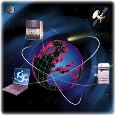
Remote Monitoring of Critical Plant AssetsPlant automation systems provide for continuous or nearly-continuous operation of machines with minimal manpower. When the plant operation is interrupted it can result in significant financial loss. Consequently it is critical to monitor the health of essential equipment on a continuous basis and be able to detect conditions that may lead to equipment failure in the future. This paper will present case studies demonstrating the benefits of remote monitoring of automated plants assets. This paper will be of interest to production and operations personnel, maintenance engineers as well as consultants. (pdf download 2mb) |
||
Application of Wireless Communication for Monitoring of Critical InfrastructureNumerous mining, industrial and logistics systems operate in remote areas and rely on critical equipment and infrastructure for their continued operation. Consequently it is essential to monitor the health of infrastructure on a continuous basis in order to detect unsafe conditions and provide timeous information for maintenance. A number of proven wireless telemetry technologies such as satellite, GSM and UHF radio can be used for these applications. This paper will present case studies demonstrating the application of wireless communication in the monitoring of critical infrastructure. This paper will be of interest to designers, production and operations personnel, maintenance engineers as well as consultants. (pdf download 650kb) |
||

Automated Remote Monitoring of Renewable Energy InstallationsRenewable energy installations such as wind farms, photovoltaic installations or solar water heating (SWH) plants depend on continuous reliable operation to justify their capital investment. A common misconception is that this technology will not need any maintenance or monitoring following installation. Renewable energy generation equipment is installed where the resources usage and power output is optimised. These are often remote locations which may be difficult or costly to visit to check operation or performance. Automated remote monitoring of the equipment on a continuous basis can detect sub-optimal performance or conditions that may lead to future equipment failure. This paper will present case studies demonstrating the benefits of automated remote monitoring of renewable energy assets. This paper will be of interest to anyone currently using or contemplating specifying renewable energy generation. (pdf download 920kb) |
||

Network Sensor and System Monitoring Technologies•Application of Sensor Information •Sensor Technologies •Sensor Developments •Communication and Sensor Data Collection •Security •Power Harvesting •Algorithms and Data Visualization (pdf download 1.7mb) |
||

Real-Time Power Distribution Network Measurement and Control•Legacy Power Grid Issues •Smart Grid Solutions •Technologies Required for the Smart Grid •Wide-area Events for Different Transmission Systems •Power System State Estimation •Wide Area Monitoring Systems •Voltage and Reactive Power Control •Communication Requirements •Equipment Performance Monitoring (pdf download 3mb) |
||

Advanced Power Quality Monitoring in SubstationsThe performance of large, critical industrial loads is dependent to some degree on the quality of the electrical power supplying the equipment. When a trip or breakdown occurs it is often useful to examine the waveforms and power quality parameters at the time of the event. Modern loads with power electronics are often sources of harmonics which older substation equipment are not designed for. This paper will discuss a number of cases where advanced real-time power quality recording is being used to measure data from intake and distribution substations. This information is used to identify problems and provide information to make improvements to minimise the impact of future events. This paper will be of interest to power distribution, maintenance and plant engineers and consultants. (pdf download 3mb) |
||

Remote Real-Time Display and Analysis of Substation DataSubstations are often equipped with a number of diverse measurement and monitoring systems which provide information on the performance of protection, switching and power distribution equipment. The usefulness of this data improves with its visibility to users in real-time. This paper will discuss practical cases where real-time substation data from a number of different sites is collected into a database and analysed according to user requirements. Automated alarms, alerts and daily reports are generated which can be used to better manage substation equipment performance and reduce downtime. This paper will be of interest to power distribution and maintenance engineers as well as consultants. (pdf download 1mb) |
||

Energy Assessments – The Search for “Negawatts”There are numerous, well documented, incentives for consumers and energy suppliers to reduce electricity consumption. These range from a lack of generation capacity on the one hand, to high energy costs and detrimental environmental impacts on the other. While the concerns and issues are mostly accepted, it is not always apparent to end users what process should be used to identify and reduce energy consumption. This article attempts to describe simple, practical steps to perform a basic energy assessment. The paper will be of interest to any user or consumer of electrical energy. Click heading for full article |
||

Achieving Electrical Load Reductions and Cost Savings in Commercial BuildingsThe power crisis that has been thrust on the country requires an immediate 10% reduction in load. If this is achieved it will eliminate disruptive load shedding and allow Eskom to rebuild capacity for the future. A 10% reduction in load could be seen as a threat to production and business. This is however a huge opportunity for most businesses and property owners to reduce their utility bill and become more efficient. This paper will discuss how a comprehensive energy measurement and control strategy can be used to identify inefficiencies and reduce energy consumption with no negative business impact. Case studies will be presented that achieved savings of up to 75% with a return of investment of more than 120%. This paper will be of value to business and property owners, consultants and facilities management personnel and will present a viable alternative to using costly generators. (pdf download 450kb) |
||
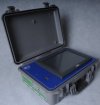
Advanced Monitoring of Critical Electrical LoadsA number of mission critical processes rely on the continuous operation of essential equipment. Were this critical equipment to fail, the process can shut down with consequent financial losses. Advanced monitoring of key equipment can provide advanced warning of impending problems. These can then be attended to before an unscheduled breakdown occurs. This paper will examine how advanced monitoring of large electrical loads can be performed. Two case studies will be presented to illustrate how measurements are taken and data is analysed to determine if equipment is operating optimally. (pdf download 450kb) |
||
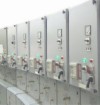
Design and Manufacture of Testing Equipment for SwitchgearSwitchgear is a key component in electrical power systems. It is essential to verify performance after design, manufacture or repair. This paper will discuss a range of automated testing equipment that are used to test switchgear. The test equipment has been designed and manufactured in South Africa in collaboration with switchgear manufacturers and testing authorities. Automated analysis of the measurements as well as archiving of results for future recall and comparison will be presented. (pdf download 650kb) |
||

E-Learning: The Training Method of the Future?Traditionally training has been performed by face to face style presentation and interaction. This requires the learner and the presenter to be in physical proximity. The cost of providing this type of training has become prohibitive as it requires the learner to spend time away from the workplace combined with travel and accommodation costs. An alternative to face to face presentation is e-learning. Training can take place at a convenient time and location for the learner and the employer while the presenter can be an expert located anywhere in the world. This paper will discuss the benefits and potential limitations of e-learning and will be of benefit to educators, trainers and anyone interested in an alternative to face to face training. (pdf download 250kb) |
||
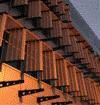
Green Building Rating Tools and Energy EfficiencyBuildings in the USA account for 70% of the electricity consumption. The situation in South Africa is not dissimilar and has prompted the establishment of the Green Building Council of South Africa during 2008. Green Building rating tools such as Green Star™ have been developed to assist developers, building owners and facility managers to reduce the environmental impact of buildings. This paper will introduce green building rating tools and discuss how energy efficiency and resource use can be improved and operating costs reduced by using these tools without any significant increase in building cost. (pdf download 300kb) |
||
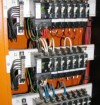
Measuring Emergency Electrical Loads in Commercial BuildingsMany commercial buildings were built decades ago. The electrical facilities in these buildings often do not meet the requirements of modern loads. Provision of emergency power was often used for little more than emergency lighting. This paper will discuss the remote measurement of electrical loads at various points in low and high rise commercial buildings. The loads that are measured include chillers, heating, air handling, lighting and various office equipment such as computers and servers. The measurements are taken on the main and emergency distribution systems. The data is remotely collected from various sites to a data centre where it can be analysed. These measurements will assist utilities, consultants and facilities management personnel to design, plan and modify emergency and normal building supplies. (pdf download 500kb) |
||
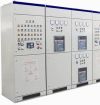
Monitoring Emergency Power Supply Health and Performance to Ensure Peak ReliabilityEmergency power supplies (EPS) are installed to provide power to critical loads either as a backup or an on-line supply. The reliability of the EPS is a key factor when selecting equipment. Once the supply is installed, routine maintenance and testing does not always ensure that the supply maintains its design reliability. Utility power supplies are becoming increasingly unreliable and interruptions from faults or deliberate load shedding is occurring more frequently. This paper will discuss how monitoring of emergency and Utility supplies can ensure the reliability of an EPS. Considerations in the design, selection and installation of monitoring systems will be presented as well as the methodologies used in the analysis of such data. Case study data from field measurement systems will be provided. Monitoring systems can assist engineers, consultants and facilities management personnel to maintain emergency supplies at peak reliability. (pdf download 500kb) |
||

Power Quality Measurements - A Review of Experiences from Three Diverse IndustriesEmergency power is required when reticulation supplies fail. Failure of distribution equipment such as transformers and cables can often be traced back to a history of poor power quality. In addition when emergency power is used to power equipment, it is necessary to check that the power quality is not sub-standard. Mission critical systems often operate directly from uninterruptible supplies. To ensure continued trouble free operation, continuous recording of power quality output is recommended... (pdf download 450kb) |
||

Safety and Reliability Engineering in Medical Electronic Products - A Case StudyMedical products must be engineered to an acceptable reliability and safety standard. International standards for medical equipment such as IEC 60601-1-4 have a number of similarities with IEC 61508 in terms of risk management and assessment. This paper will examine a life cycle case study for medical equipment from design to final certification with particular emphasis on the risk analysis of the control software and safety engineering. (pdf download 400kb) |
||
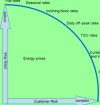
Using Time Of Use (Tou) Tariffs In Industrial, Commercial And Residential Applications Effectively.Time of use (TOU) tariffs are commonplace in developed economies around the world. These tariffs incentivise customers to lower peak loads in order to reduce their electricity bills. The objective for the power utility is to reduce peak loads and/or shift load from peak to off-peak periods. This paper will discuss the effective application of TOU tariffs for industrial, residential and commercial power users. (pdf download 350kb) |
||
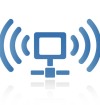
Using Ultra Low Power Equipment in Hazardous AreasIntrinsic Safety is achieved by limiting the power and energy in hazardous areas to levels below those that cause a spark or ignition. Over the past decade, power requirements of electronic equipment have reduced significantly. Plant interfaces and sensors can be connected together and to control systems using low power wireless communication networks. This equipment can provide a complete measurement solution for use in hazardous locations, eliminating the need for wiring, intrinsic safety barriers and explosion proof conduits and housings. This paper will examine the safe application of low power instrumentation and wireless technologies and discuss the design, selection and implementation of ultra low power systems in hazardous areas. (pdf download 650kb) |
||


